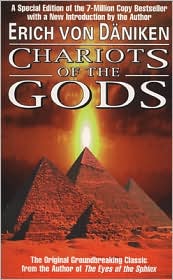Marking Time
Search in google:
"If you lie awake worrying about the overnight transition from December 31, 1 b.c., to January 1, a.d. 1 (there is no year zero), then you will enjoy Duncan Steel's Marking Time."--American Scientist "No book could serve as a better guide to the cumulative invention that defines the imaginary threshold to the new millennium."--Booklist A Fascinating March through History and the Evolution of the Modern-Day Calendar . . . In this vivid, fast-moving narrative, you'll discover the surprising story of how our modern calendar came about and how it has changed dramatically through the years. Acclaimed author Duncan Steel explores each major step in creating the current calendar along with the many different systems for defining the number of days in a week, the length of a month, and the number of days in a year. From the definition of the lunar month by Meton of Athens in 432 b.c. to the roles played by Julius Caesar, William the Conqueror, and Isaac Newton to present-day proposals to reform our calendar, this entertaining read also presents "timely" tidbits that will take you across the full span of recorded history. Find out how and why comets have been used as clocks, why there is no year zero between 1 b.c. and a.d. 1, and why for centuries Britain and its colonies rang in the New Year on March 25th. Marking Time will leave you with a sense of awe at the haphazard nature of our calendar's development. Once you've read this eye-opening book, you'll never look at the calendar the same way again. Publishers Weekly Australian astronomer Steel (Rogue Asteroids and Doomsday Comets) appears to have packed three disparate books into this single volume: a general history of the development of the calendar system, a more advanced version larded with astronomical information for the science buff or professional, and a reassessment of why England settled the mid-Atlantic coast of North America. According to Steel, Elizabeth I's colonization activities were part of her maneuvering against Pope Gregory XIII. Well aware of the Gregorian calendar's flaws, English scientists thought that if they developed a superior calendar, it would help effect a rapprochement with European nations fence-sitting in the quarrel between London and Rome. Possession of territory on the 77th meridian, in the vicinity of what is now Washington, D.C., was crucial, because English calendar reformers considered it to be "God's longitude." Steel's account of this grand, somewhat daft scheme makes an intriguing study in its own right, yet it gets lost amid a tangle of unrelated facts. He advances other interesting theories with abundant background information to back them up: that Jesus was born in April 5 B.C.E. and that there was no room at the inn because it was Passover, not because of an empire-wide census; that the Star of Bethlehem was a comet; and that some major celestial event occurred around 3000 to 4000 B.C.E. because so many of the world's calendar systems began around that time. Steel seems to have never met an interesting fact he didn't like to repeat, and this unfortunate habit bogs down an otherwise excellent study of calendar systems. (Nov.) Copyright 1999 Cahners Business Information.
Preface.George Washington's Birthday.The Country Parson's Formula.The Cycles of the Sky.Stonehenge and Sothis (Third Millennium B.C.).Meton (432 B.C.), Callippus (330 B.C.), and Hipparchus (130 B.C.).Julius Caesar (46 B.C.).Constantine the Great (A.D. 321).Dionysius Exiguus (A.D. 525).The Synod of Whitby (A.D. 664).The Venerable Bede (A.D. 725).Lady Day.Retrospective Dating.Pope Gregory XIII (A.D. 1582).The Perfect Christian Calendar and God's Longitude.Archbishop Ussher and the Age of the Earth (A.D. 1650).Lord Chesterfield's Act (A.D. 1751).Poor Richard's Almanack.President Arthur Requests (A.D. 1884).Marching to the Same Drummer?Calendar Reform.The Comet of Bethlehem.How Many Days in a Dinosaur Year?Should 2100 Be a Double Leap Year?Epilogue.Appendix A: How Long Is a Day?Appendix B: How Long Is a Year?Appendix C: How Long Is a Second?Appendix D: How Long Is a Month?Selected Bibliography.Index.








